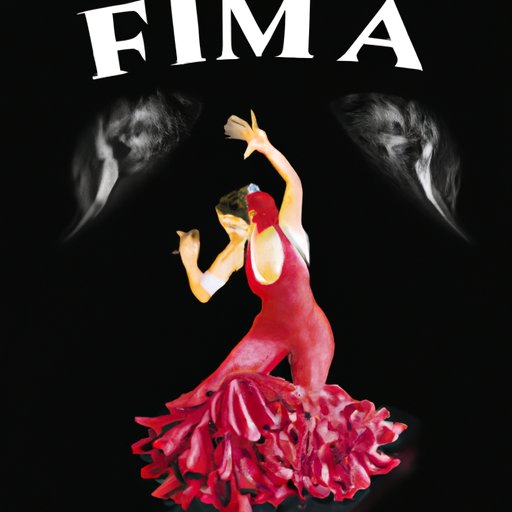Introduction
Flamenco is a traditional Spanish art form that combines music, singing, and dancing. It originated in Andalusia, Spain, and has become an iconic part of Spanish culture. But where did flamenco come from? In this article, we’ll explore the origins and cultural significance of this unique art form.

A Historical Overview of Flamenco Dance Origins
The exact origins of flamenco are unclear, but most historians agree that it began in Spain during the 18th century. It is believed to have developed as a combination of various musical, cultural, and folk influences, including Spanish and Moorish cultures. These influences combined with the music and dance styles of the Romani people, or gypsies, who traveled through Spain at the time.
Throughout its history, flamenco has evolved and changed in response to different cultural influences. By the 19th century, flamenco had become an established art form in Spain, and it continues to evolve today.
Exploring the Cultural Influences Behind Flamenco Dance
Flamenco has been heavily influenced by both Spanish and Moorish cultures. Spanish culture is characterized by passionate emotions and strong rhythms, while Moorish culture is known for its intricate melodies and intricate rhythms. These two distinct cultures have blended together to create the unique sound of flamenco.
The gypsies also played an important role in the development of flamenco. They brought their own music and dance styles to Spain, which were then incorporated into the flamenco style. These gypsy influences can be seen in the improvisational nature of flamenco, as well as in its use of percussion instruments such as castanets.

The Religious and Social Significance of Flamenco Dance
In addition to its cultural influences, flamenco has long been used as a form of spiritual expression. For many people, flamenco is seen as a way to connect with God and express their innermost feelings. Flamenco has also been used as a way to honor special occasions, such as weddings and baptisms.
Flamenco has also had a significant impact on the social customs of Spain. It is often performed in taverns, cafes, and other public venues, and it is seen as a way to bring people together and celebrate life. It is also used as a form of entertainment at festivals and other large events.
A Look at the Traditional Styles and Movements of Flamenco Dance
Flamenco is made up of several different styles and movements, each of which has its own unique characteristics. The most common styles are Fandangos, Sevillanas, Bulerías, and Alegrías. Each style has specific steps and hand clapping patterns that must be followed in order to perform the dance correctly.
In addition to the different styles, flamenco also includes a variety of different movements, such as heel taps, body rolls, and arm circles. These movements are used to emphasize the rhythm and emotion of the music and add a sense of drama to the performance.

Examining the Impact of Flamenco Dance on Modern Music and Dance
Since its beginnings in the 18th century, flamenco has become increasingly popular in the modern era. It has been featured in films, television shows, and even video games. As a result, its influence can be seen in many other forms of music and dance, including hip-hop and salsa.
Flamenco has also had a major impact on modern music. Its distinctive rhythms and melodies have inspired countless musicians and composers, from classical to modern genres. In recent years, flamenco has even begun to find its way into pop music, with artists such as Shakira and Madonna incorporating flamenco elements into their songs.
Conclusion
Flamenco is a traditional Spanish art form that has captivated audiences for centuries. Its roots can be traced back to the 18th century, when it was developed as a combination of Spanish, Moorish, and gypsy influences. Since then, it has become a beloved part of Spanish culture, and its influence can be seen in many other forms of music and dance.
Flamenco is more than just a dance; it is a spiritual experience that connects people to their culture and history. It is a powerful form of expression that has left an indelible mark on the world of music and dance.
(Note: Is this article not meeting your expectations? Do you have knowledge or insights to share? Unlock new opportunities and expand your reach by joining our authors team. Click Registration to join us and share your expertise with our readers.)
